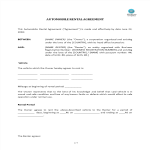Present Value Calculator

Opslaan, invullen, afdrukken, klaar!
How to make a Present Value Calculator in Excel? Download this example Present Value Calculator Excel spreadsheet template now!
Beschikbare bestandsformaten:
.xls- Gevalideerd door een professional
- 100% aanpasbaar
- Taal: English
- Digitale download (43 kB)
- Na betaling ontvangt u direct de download link
- We raden aan dit bestand op uw computer te downloaden.
Financiën NPV
How to make a Present Value Calculator in Excel? An easy way to create your spreadsheet is by downloading this example Present Value Calculator Excel spreadsheet template now!
Present value is compound interest in reverse: finding the amount you would need to invest today in order to have a specified balance in the future. Among other places, it's used in the theory of stock valuation.
As you know, the amount of money you have today will be worth a different amount in the future. This is, of course, due to things like inflation and interest rates.
For the average citizen, this might be an especially valuable piece of information when deciding to open a savings account. Should you wish to start saving money for your child's college tuition, for example, you'll need to know how much money to deposit initially to reflect its future value.
But how do you find the current value of a future sum of money? Using a concept called present value, we can determine how much a certain amount of money in the future is actually worth today.
Present Value Formula
present value = P * [(1 - (1 + i)-n)/ i]
where,
P = Payments each period
i = Effective interest rate
n = Number of periods remaining
How Does It Work?
Let's say that in 10 years, you'd like to have $10,000 to put towards your child's college tuition. You open a savings account that accrues 5 percent interest each year. Using present value, you can figure out how much money you need to deposit today to reach your goal. To calculate present value, we use this formula: PV = FV/(1+r)n where:
FV represents the future value or your goal amount ($10,000)
r represents periodic rate of return (5 percent interest)
n represents the length of the period (10 years)
By plugging your information into the formula, you'll see that you would need to deposit $6,139.13 at 5 percent interest today in order to have $10,000 in 10 years. In other words, the present value of $10,000 in this situation is $6,139.13.
Why Is It Important?
Present value is the heart of finance. It dictates banking, insurance, stock pricing, financial modeling, and much more.
It's an important concept to individuals, but it is even more critical in a business scenario. Businesses must understand the time value of money since virtually everything they do will result in a future payoff or obligation. Knowing the present value of a future sum of money can help a business make important decisions. Likewise, shareholders use present value to make investment decisions.
We use present value to demonstrate how the money we're holding in our hand is worth more than a future sum of money. This is because financial models almost always assume that something will cost more later and because interest rates greatly affect future value.
So, if we know we'll need to spend $100 on a service a year from now, we can use the present value concept to illustrate that it's smarter to hold onto the $100 and invest it to earn interest. Then, when we need to spend the $100, we'll have something left over to show for it. If we had prepaid the amount, we would have missed out on earning interest.
Present value helps us recognize when a quoted future cash flow might not be as great as it's made out to be. Whether it's on a business or personal level, sometimes the situations we encounter require us to use some critical thinking to ensure we're getting the most out of our investments.
This Excel template is a great way to increase your productivity and performance. It gives you access to do remarkable new things with Excel, even if you only have a basic understanding of working with formula’s and spreadsheets. If time or quality is of the essence, this ready-made presentation can certainly help you out!
This calculator can help you figure out the present day value of a sum of money that will be received at a future date. First enter the payment’s future value and its discount rate. Then indicate the number of years before you will receive the payment.
Download this Present Value Calculator Excel spreadsheet now!
DISCLAIMER
Hoewel all content met de grootste zorg is gecreërd, kan niets op deze pagina direct worden aangenomen als juridisch advies, noch is er een advocaat-client relatie van toepassing.
Laat een antwoord achter. Als u nog vragen of opmerkingen hebt, kunt u deze hieronder plaatsen.



